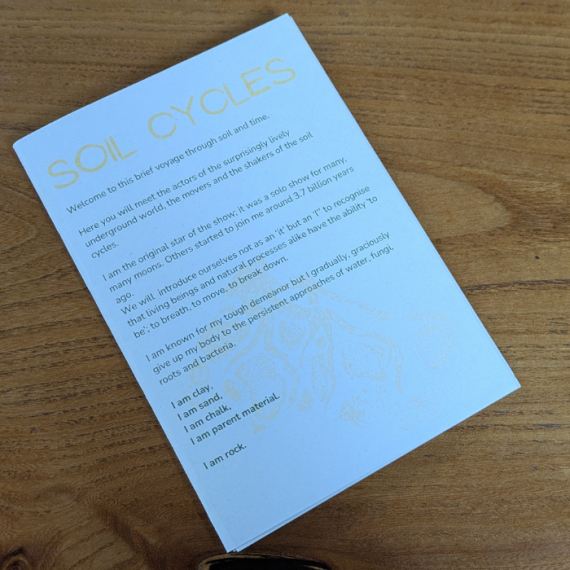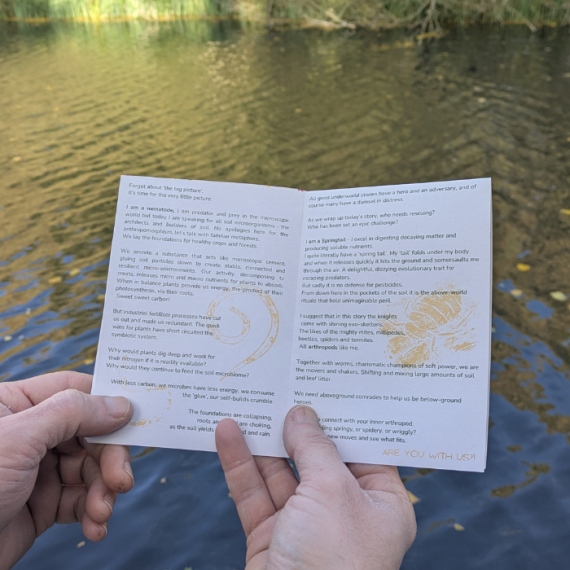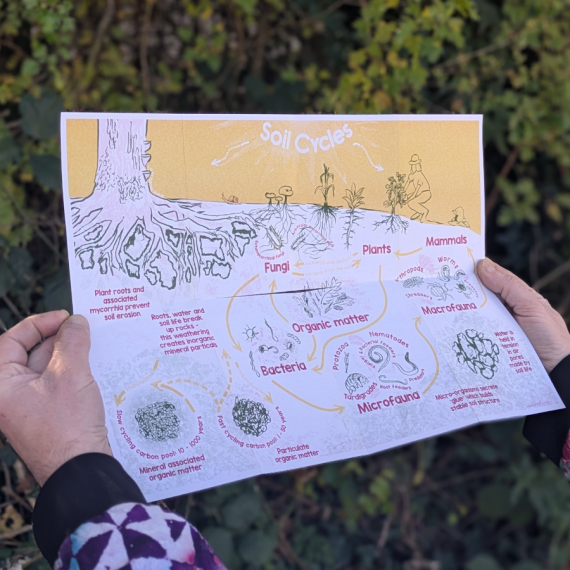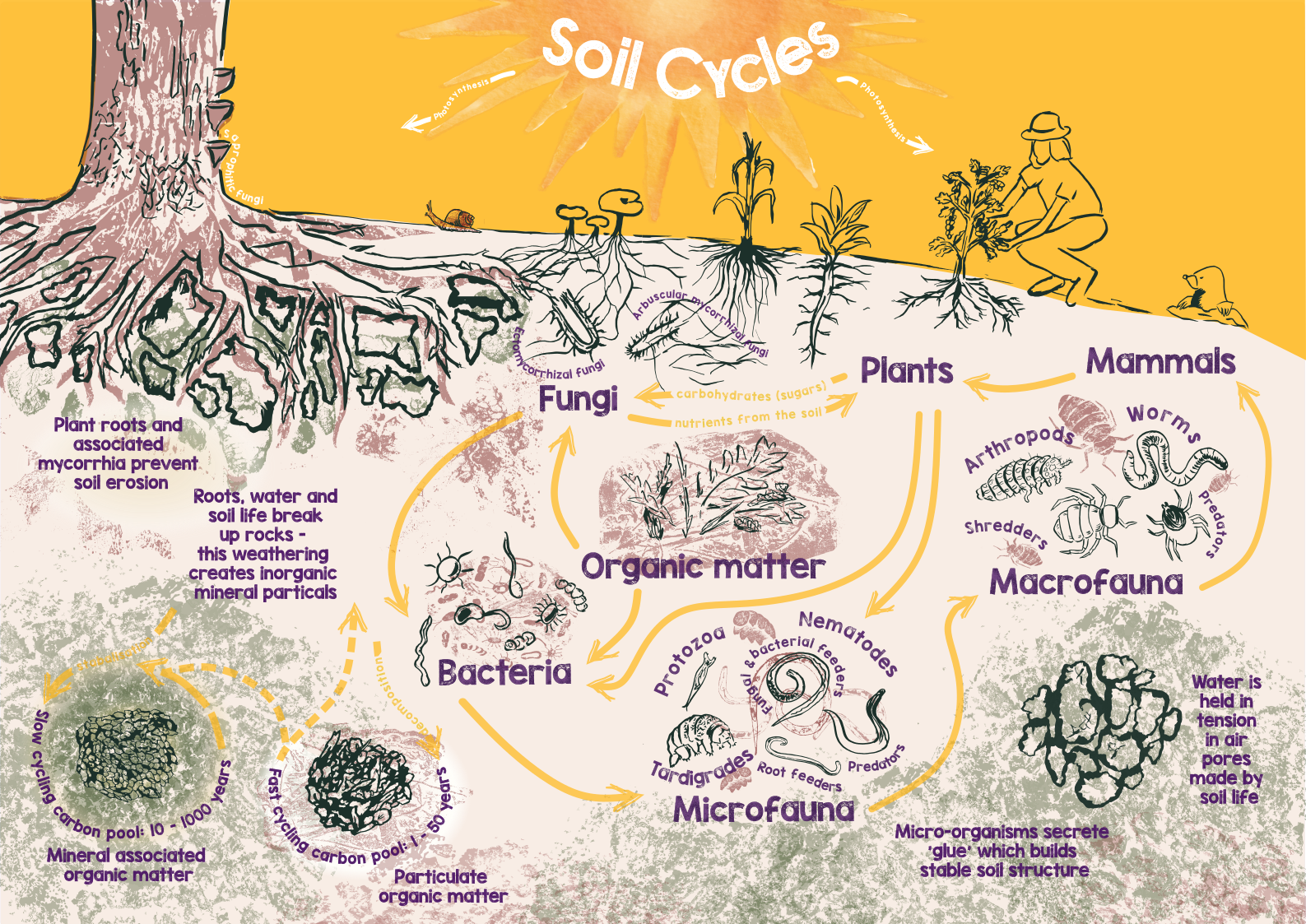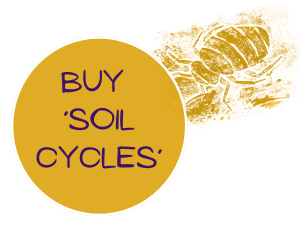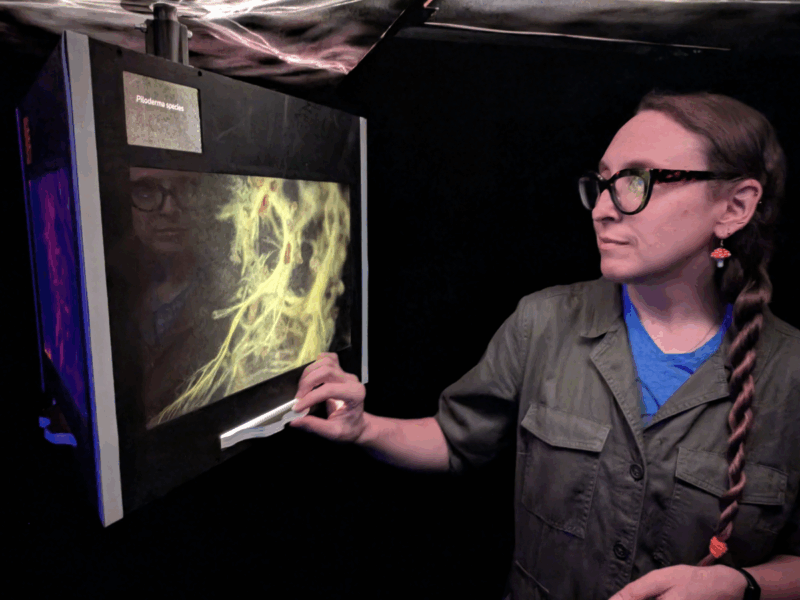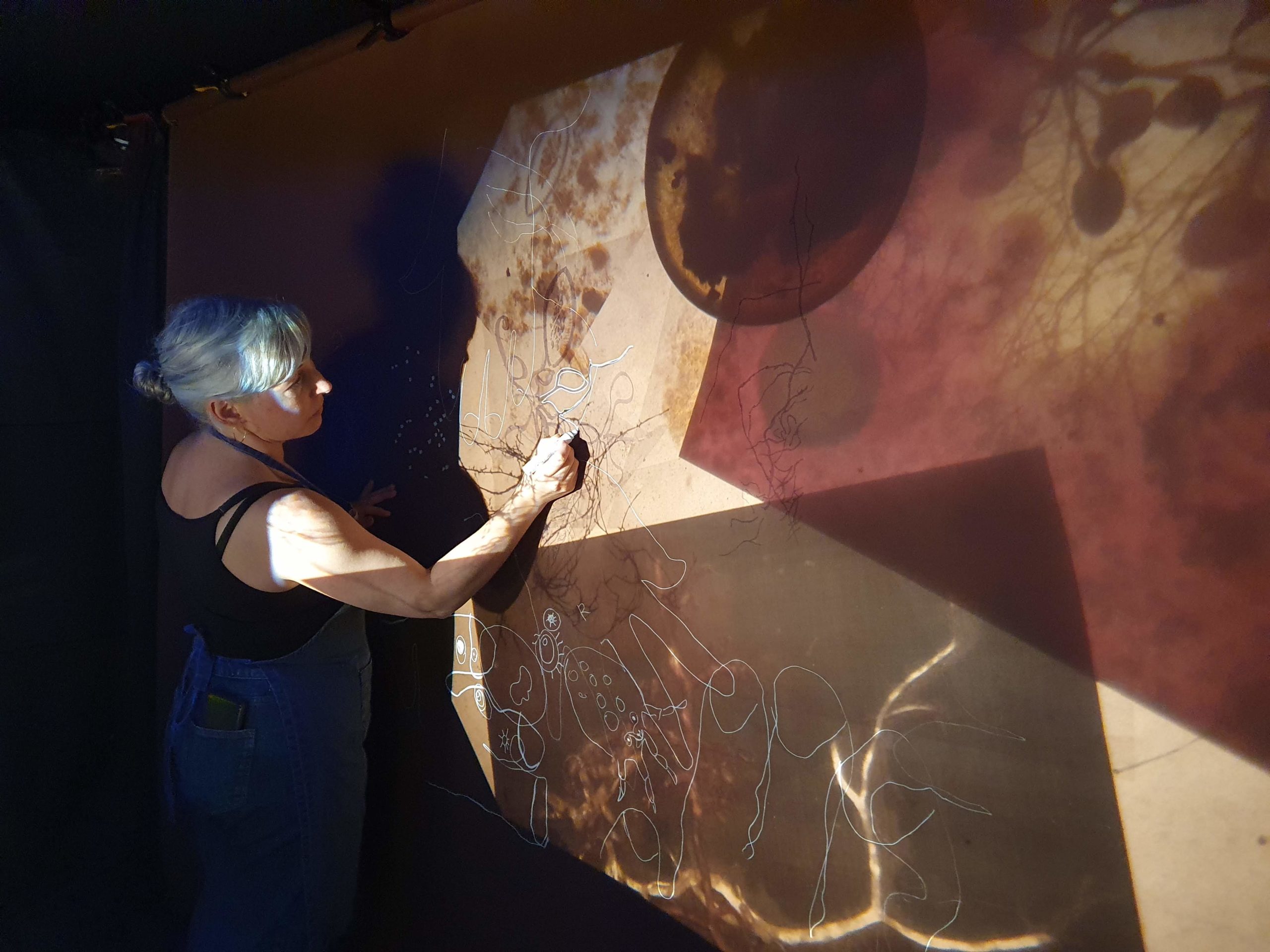Delve into the diagram
In the food web, light energy from the sun is transformed into glucose, a simple sugar in plants. Fungi and bacteria absorb sugars from plant roots and decaying organic matter. In turn they are eaten and this energy is passed on as animals are consumed by larger animals.
This food is all carbon based, so when we hear of soil being an amazing carbon store, it is essentially a huge grocery store for fungi, bacteria and microfauna in the soil. Soil holds more than double the amount of carbon than all of the worlds vegetation and like in vegetation the carbon is cycling, the stores are only temporary, nothing is static.
Decaying organic matter is ‘fast food’, an accessible form of carbon and other nutrients. As fungi and bacteria feast they cause the decomposition; creating Particulate Organic Matter (POM) and taking in carbon for energy to grow and releasing some carbon back into the atmosphere through respiration.
POM is more easily available for other microbes to convert from complex organic molecules into simpler sugars and inorganic nutrients. The microbes excrete waste products that are vital nutrients that plants can absorb. POM cycles through healthy soil in 1 – 50 years.
Mineral-Associated Organic Matter (MAOM) forms when carbon-based organic compounds become ‘glued’ to mineral particles, such as clay, with sticky polysaccharides produced by bacteria and fungi. Here the organic molecules are hard to reach and not easily digestible – preserved for when the organic matter cupboard is bare. In MAOM the carbon cycles in 10 – 1000 years.
While the production of organic matter in soil is relatively speedy it takes a long time for the mineral portion of soil to be created. Minerals including inorganic carbon are released from rocks through physical, chemical and biological weathering. It takes approximately 1000 years to create a centimetre of top soil yet it can be lost in an instant due to extreme weather, or being concreted over.
The life in the soil can’t survive without a balance of air and water. A connected warren of microscopic air pores is vital for healthy microbial communities. In a positive feedback loop, where the conditions are habitable, there is a greater amount of microbial activity. They secrete more ‘glue’ which binds particles into aggregates, in turn creating a more stable soil structure.
A small selection of soily resources:
Soil 101 – a 2.5 minute animated video by the UN Food and Agricultural Organisation
Soil fly-through video – an explanation of soil structure, porosity and carbon storage
What do microbes do in soil – article outlining the varied and essential roles of soil life
Not all soil carbon is created equally – an article explaining Particulate Organic Matter and Mineral-associated Organic Matter




